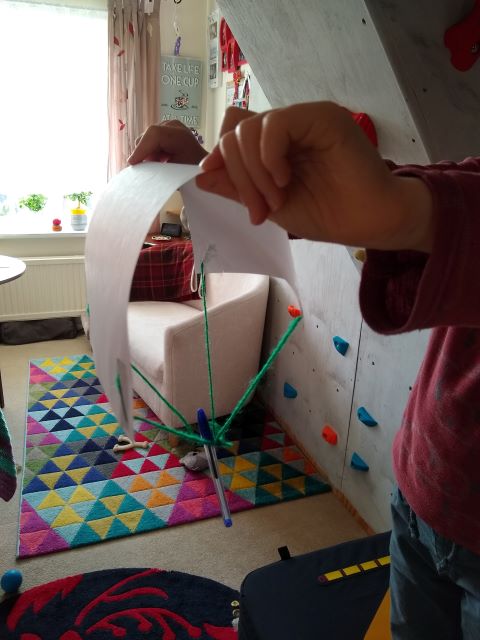This is a science experiment about which material is best for a parachute.
Planning
Independent variable: materials.
Control variables: load—pen, size—29.5 cm x 21 cm, shape—rectangle, height—1.4 m.
Dependent variable: time start at drop, stop when parachute touches the ground.
Results


Conclusion
I can tell that the paper was the best because it took longest to land, taking a mean time of 1.4 seconds. The cardboard took a mean time of 0.83 seconds, while the fabric took 0.88 seconds. The plastic took 0.22 seconds less than the paper, giving it a mean time of 1.18 seconds.
Cardboard didn’t work because it was too heavy and wasn’t flexible. Fabric wasn’t the best because air could blow through its tiny holes. Plastic had a flexibility problem like cardboard because it was too flexible. Paper was the best because it was the right weight, unlike cardboard. It had the right amount of flexibility which cardboard and plastic didn’t have. Unlike third place (fabric) paper did not have any tiny holes.

